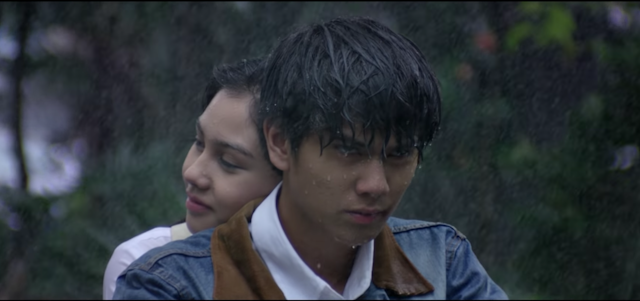A teen romantic drama, Dilan 1991, has become a huge box-office hit in Indonesia not long after its release. It attracted an audience of 2 million only three days after its release in late February. So far, the sequel to Dilan 1990 is set to replicate the success of the first movie, the second-most-watched movie in Indonesian cinema history with 6.2 million viewings.
It has been so popular that even the Indonesian president recently used it as an acronym for one of his campaign taglines “Digital Melayani” (Dilan), which loosely translates to digital and servicing.
From its teen romance plot, Dilan is no different from Hollywood’s teen flicks. The sequel continues the love story between teenagers Dilan (Iqbal Ramadhan) and Milea (Vanesha Prescilla).
But what makes the Dilan series unique is that it provides Indonesia’s young audiences, who were born in the 1990s, with a window on urban youth in Bandung during that era, when Indonesia was still under Soeharto’s New Order regime.
In Dilan, writer Pidi Baiq and director Fajar Bustomi attempt to subtly portray the culture and politics of the New Order era using the genre of romantic teen flicks.
A window on Indonesia’s New Order
After more than 30 years, Soeharto’s dictatorship crumbled in 1998. The children born during Indonesia’s period of democratisation are now in their late teens or early twenties, the demographic for the Dilan series teen flick.
These young Indonesians did not experience life under the oppressive Soeharto government. Millions of people became victims of the New Order regime.
The same government also encouraged a politically conscious act to define women’s identity in Indonesia as housewives. Women’s role under the Soeharto regime was to manage the household, educate the children, making sure that home was safe for young generations to grow to become men with Pancasila values, Indonesia’s state ideology. Feminist scholar Julia Suryakusuma called this government’s agenda “the State Ibuism”.
In the film, the figures of Dilan’s and Milea’s mothers are busy managing the households and fully support the children while their husbands, both in the army, are often absent.
A scene where Dilan’s mother tells Milea that police arrested Dilan because he took his father’s gun to a fight subtly describes the reality of the military presence in civil life during the New Order regime.
Perspectives
The Dilan film series is based on the best-selling trilogy of novels, Dilan, written by Pidi Baiq. It explores love, high school life, solidarity among youth and conflicts between peers and with older generations.
The story line reminds me of the Hollywood musical classic Grease about a teen romantic relationship between Sandy (Olivia Newton-John), a schoolgirl, and Danny (John Travolta), a member of motorbike club. At the end of the story, Sandy changes her hair and dress style, more like Danny, showing that she finally embraces his world.
In Dilan, however, Milea takes a firm stand against Dilan’s friendship with his motorcycle gang friends. Both Grease and Dilan portray youths trying to find their identities as they struggle with uncertainties in their world.
In the first two novels and their movie adaptations, the audience follows the story through Milea’s perspectives. For the last sequel, yet to be released, Dilan will narrate the story.
This will allow the audience to experience the story from both the male and female perspectives. When the film trilogy is completed, we will be able to see how this use of two narrators affects the way the story is told.
Perhaps it will provide answers to questions the audience has about Dilan’s motives. Why did Dilan join the motorbike gang: is he angry at his father who is often absent from home?
Raising the bar
So far, the Dilan series has been well accepted by fans. But film producers should continue to raise the bar for the next one. The audience always demands a fresh creative dynamic in a sequel.
A film sequel should not only aim for commercial success by simply capitalising on previous works. It also needs to broaden the audience’s vision and imagination.


